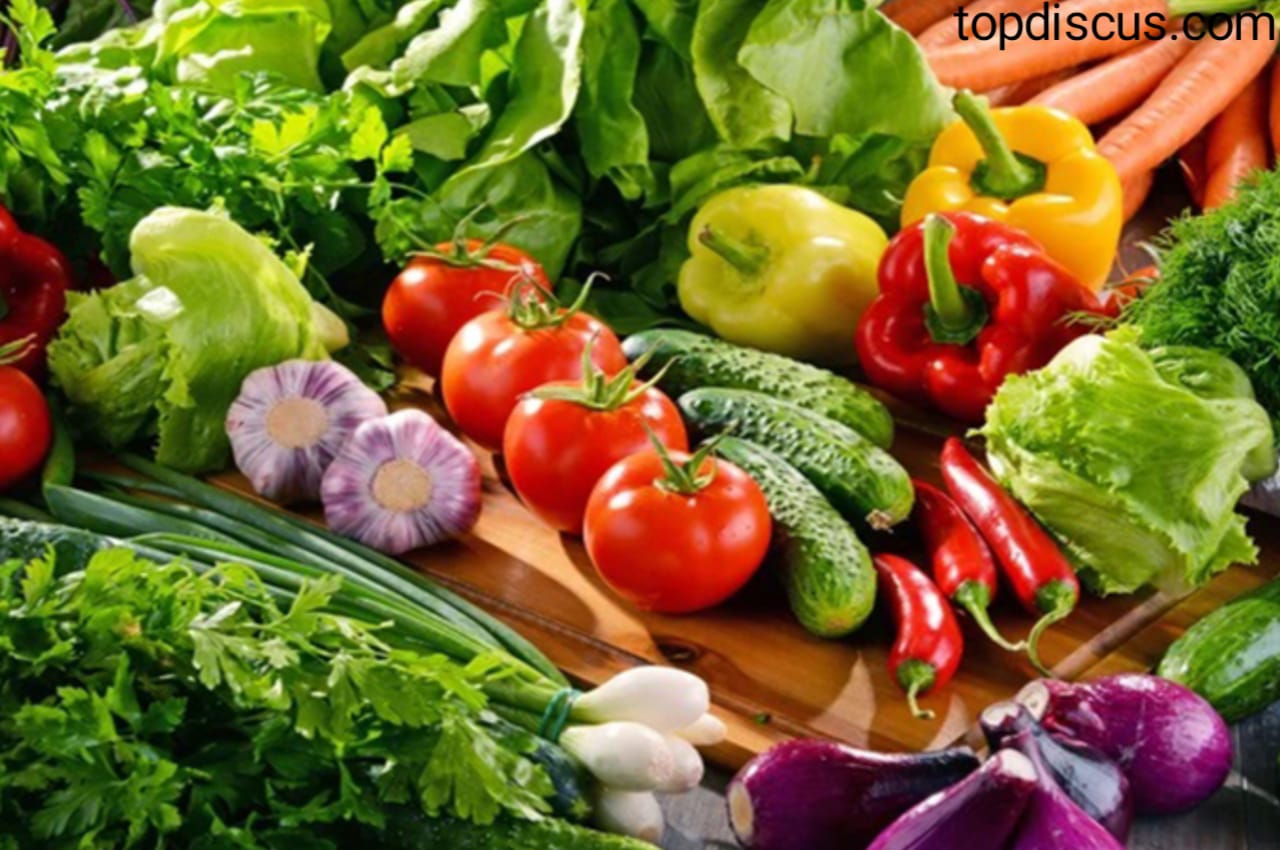“Best Ideas for Kitchen Gardening” In this blog post, we will explore the benefits of kitchen gardening and provide you with some fantastic ideas to get started on your green journey. From choosing the ideal location for your garden to maintaining it like a pro, we’ve got you covered. So please pick up your gardening gloves, and let’s start!
Welcome to the wonderful world of kitchen gardening, where you can transform your home into a bountiful oasis of fresh herbs, vibrant vegetables, and luscious fruits. Whether you have acres of land or just a tiny balcony, kitchen gardening is a versatile and rewarding way to bring nature’s goodness to your doorstep. Imagine stepping outside to pluck some basil leaves for tonight’s pasta dish or harvesting juicy tomatoes for that perfect summer salad – all from your garden!
Choose the best Location for Your Kitchen Garden:
Choosing the best Location for Your Kitchen Garden is essential for its success. You want to ensure that your plants receive the optimal amount of sunlight, water, and nutrients they need to thrive.
You must remember the amount of sunlight the area receives throughout the day. Most vegetables and herbs require at least six hours of direct sunlight daily. Observe different rooms in your yard or balcony to determine which spot gets the most sun exposure.
Next, assess the soil quality in potential locations. Good irrigation is necessary for healthy plant growth. Make sure there isn’t excessive water pooling or compacted soil that retains moisture. If necessary, amend the soil with compost or organic matter to improve its fertility and drainage capabilities.
Also, think about proximity to a water source. Your kitchen garden will need regular watering, so having easy access to a hose or watering can simplify this task. Consider any nearby structures or trees that may shade your garden during certain times of the day. While some plants tolerate partial shade well, others require total sun exposure for optimal growth.
Consider convenience and accessibility when choosing a location for your kitchen garden. Select an area easily accessible from your kitchen to quickly harvest fresh ingredients whenever needed! Considering these factors when choosing where to locate your kitchen garden, you’ll set yourself up for gardening success! To Visit Our Home Page Click Here
Types of Plants to Grow in a Kitchen Garden:
When it comes to growing plants in a kitchen garden, the options are endless! You can choose from various herbs, vegetables, and even fruits suitable for small spaces. Here are some ideas described below to get you started:
1. Herbs
2. Salad Greens
3. Tomatoes
4. Peppers
5. Strawberries
6. Microgreens
1. Herbs:
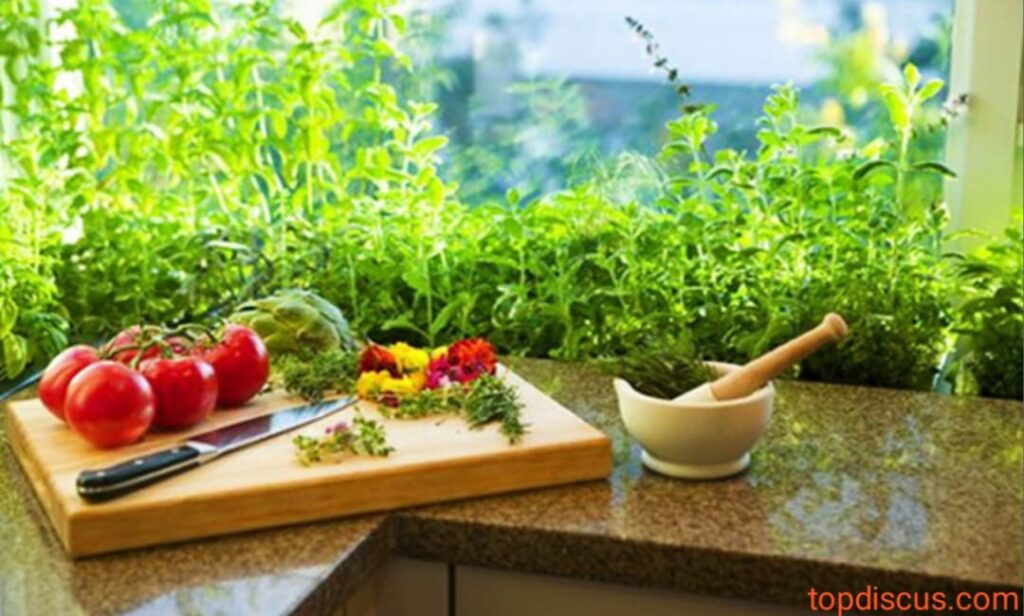 These plants add flavor to your dishes and have many health benefits. Basil, Mint, Rosemary, Thyme, and Parsley are popular choices. These require little space and can be grown in small pots and baskets.
These plants add flavor to your dishes and have many health benefits. Basil, Mint, Rosemary, Thyme, and Parsley are popular choices. These require little space and can be grown in small pots and baskets.
2. Salad Greens:
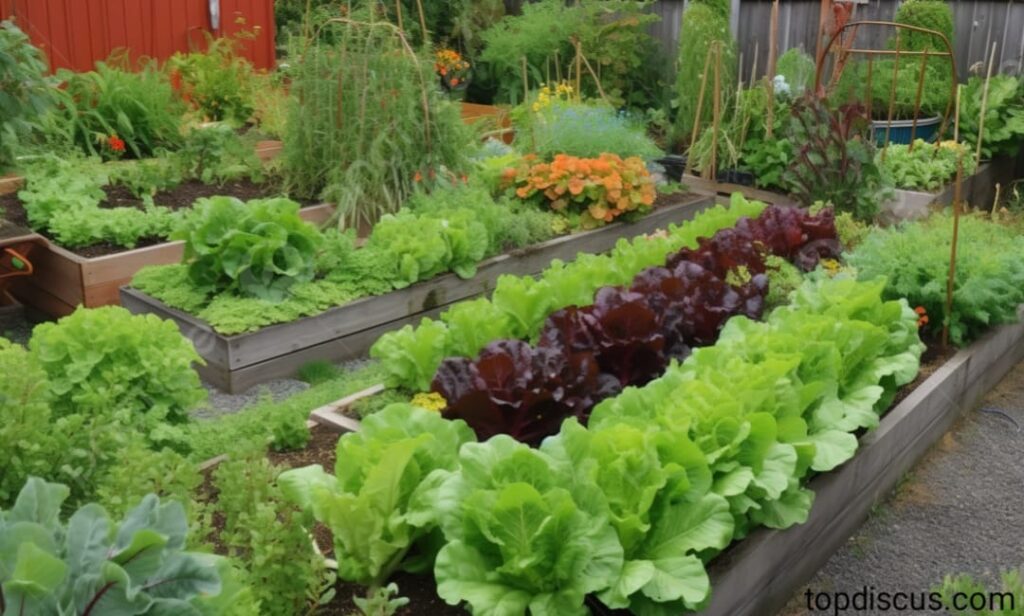 Lettuce, spinach, arugula, and kale are easy to grow and provide fresh greens for your salads throughout the year. They thrive in containers or raised beds. R emember to choose plants that suit your climate and available sunlight, as different plants have different requirements for optimal growth! Happy gardening!
Lettuce, spinach, arugula, and kale are easy to grow and provide fresh greens for your salads throughout the year. They thrive in containers or raised beds. R emember to choose plants that suit your climate and available sunlight, as different plants have different requirements for optimal growth! Happy gardening!
3. Tomatoes:
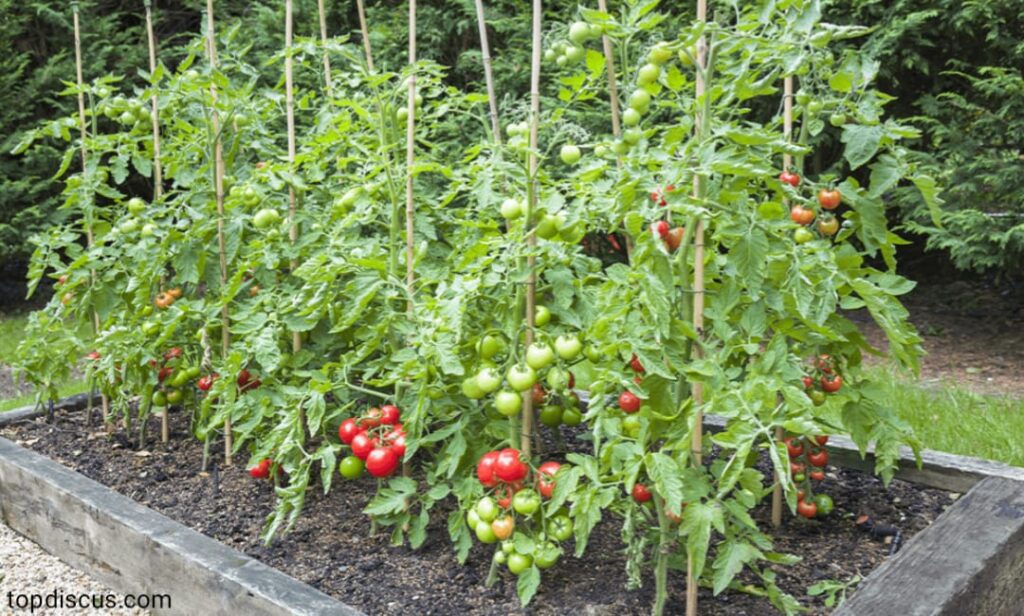 There’s nothing quite like the taste of homegrown tomatoes! Compact varieties like cherry or patio tomatoes do well in containers on sunny balconies. Tomatoes have a vital role in the taste of our meals.
There’s nothing quite like the taste of homegrown tomatoes! Compact varieties like cherry or patio tomatoes do well in containers on sunny balconies. Tomatoes have a vital role in the taste of our meals.
4. Peppers:
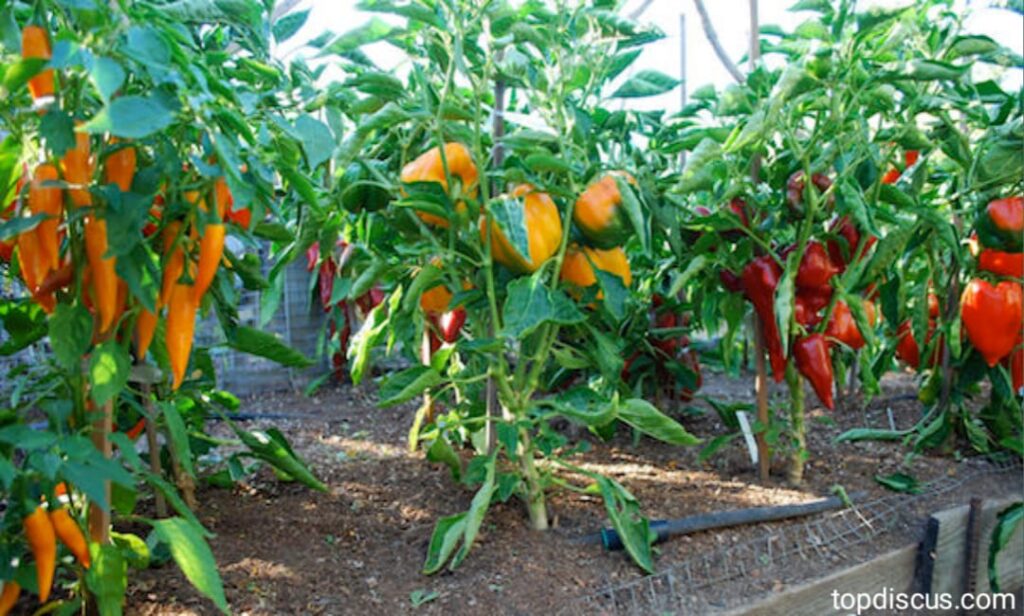 Whether you prefer sweet bell peppers or spicy chili peppers, they can be grown successfully in pots or grow bags. Remember to choose plants that suit your climate and available sunlight, as different plants have different requirements for optimal growth! Happy gardening!
Whether you prefer sweet bell peppers or spicy chili peppers, they can be grown successfully in pots or grow bags. Remember to choose plants that suit your climate and available sunlight, as different plants have different requirements for optimal growth! Happy gardening!
5. Strawberries:
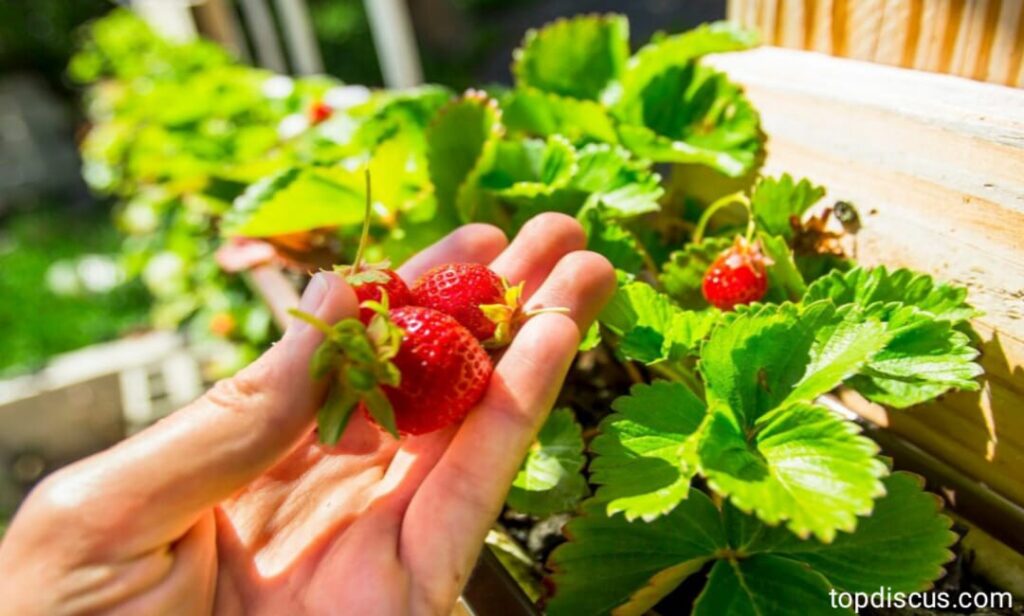 These sweet berries make an excellent addition to any kitchen garden! They can be planted in vertical planters or hanging baskets. Remember to choose plants that suit your climate and available sunlight, as different plants have different requirements for optimal growth! Happy gardening!
These sweet berries make an excellent addition to any kitchen garden! They can be planted in vertical planters or hanging baskets. Remember to choose plants that suit your climate and available sunlight, as different plants have different requirements for optimal growth! Happy gardening!
6. Microgreens:
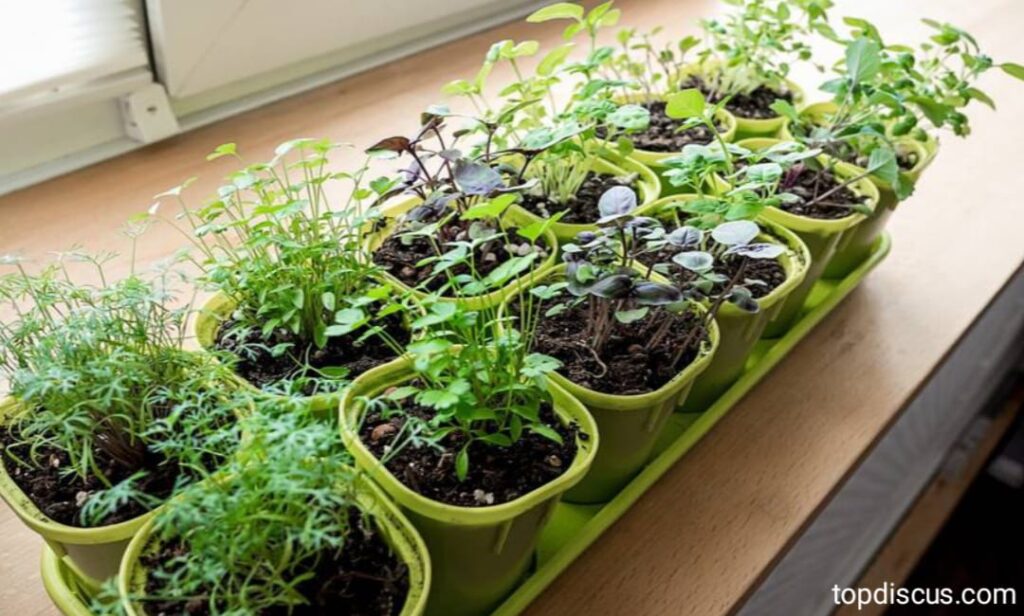 These tiny nutrient-packed greens are harvested when they’re young and tender. They proliferate indoors under artificial light. Remember to choose plants that suit your climate and available sunlight, as different plants have different requirements for optimal growth! Happy gardening!
These tiny nutrient-packed greens are harvested when they’re young and tender. They proliferate indoors under artificial light. Remember to choose plants that suit your climate and available sunlight, as different plants have different requirements for optimal growth! Happy gardening!
For more information, Click Here
Benefits of Kitchen Gardening:
Kitchen gardening is an excellent way to grow your fresh produce and offers numerous benefits beyond access to homegrown food. One of the critical advantages of kitchen gardening is the complete control over what goes into your plants. By growing fruits, vegetables, and herbs in your home garden, you can ensure they are free from dangerous pesticides and chemicals.
Another benefit of kitchen gardening is its positive impact on the environment. When you grow your food at home, you reduce the carbon footprint associated with transportation and packaging involved in store-bought produce. Additionally, practicing organic methods such as composting and using natural fertilizers can help improve soil health and promote biodiversity.
In addition to environmental benefits, kitchen gardening also promotes physical activity and mental well-being. Spending time outdoors tending to your garden can be a great form of exercise while providing an escape from daily stresses. Gardening has even been shown to reduce anxiety and improve overall mental health.
Moreover, having a kitchen garden allows for greater variety in meals as you can access a wide range of fresh ingredients outside your door. This can inspire creativity in cooking and encourage healthier eating habits for yourself and your family.
Kitchen gardening is an educational tool for teaching children about nature’s cycles and where their food comes from. It instills valuable lessons about patience, responsibility, sustainability, and self-sufficiency.
With all these incredible benefits packed into one activity, it’s no wonder more people are embracing kitchen gardening as a rewarding hobby!
Tips for Maintaining a Successful Kitchen Garden:
Maintaining a thriving kitchen garden requires time, effort, and attention to detail. Some tips are described below that will help keep your garden thriving.
First and foremost, regular watering is essential for the health of your plants. Depending on the type of plant and weather conditions, you may need to water daily or every few days. Be sure to water at the plants’ base rather than spray them from above.
Weeding is another crucial aspect of maintenance. Take time each week to remove any unwanted growth from your garden bed.
Pruning and trimming are necessary tasks to ensure proper growth and prevent overcrowding. Trim back any dead or diseased branches as soon as you notice them. This will promote healthy change in your plants.
Fertilizing is critical to providing essential nutrients for your kitchen garden’s success. Use safe organic fertilizers for edible plants, following package instructions for application rates.
Regularly monitor pests in your garden, such as aphids or caterpillars, that might damage your crops. Consider using natural pest control methods like introducing beneficial insects.
Stay vigilant against diseases by regularly inspecting leaves and stems for signs of infection or rotting. Remove affected parts promptly before they spread further.
Following these tips will maintain a flourishing kitchen garden throughout the growing season!
Creative Ideas for Small-Space Kitchen Gardening:
Small spaces should never limit your gardening dreams! Even if you have a tiny kitchen or limited outdoor room, plenty of creative ideas exist to make the most out of your small-space kitchen garden. Here are some unique and original ideas to inspire you:
1. Vertical Gardens:
Utilize vertical space by growing plants on walls or hanging baskets. Install shelves or use repurposed materials like pallets to create a stunning vertical garden that adds beauty and functionality to your kitchen.
2. Window Boxes:
If you have windowsills with adequate sunlight, consider installing window boxes for herbs and small vegetables. Not only will they provide fresh ingredients at arm’s reach, but they also add charm to your kitchen decor.
3. Hanging Herb Garden:
Hang pots of herbs from the ceiling using hooks or a DIY macrame hanger. This saves precious counter space and creates an eye-catching display in your kitchen.
4. Indoor Greenhouse:
Convert a shelving unit into an indoor greenhouse using LED grow lights and plastic sheeting. This allows you to develop various plants year-round without taking up much floor space.
5. Microgreens Tray:
Invest in shallow trays specifically designed for growing microgreens indoors. These nutrient-packed greens can be harvested within weeks and require minimal space.
6. Mobile Planters:
Create movable planters on wheels so you can easily rearrange them as needed or move them outdoors for extra sunlight when necessary.
7 . Tiered Plant Stand :
A tiered plant stand is perfect for maximizing surface area while adding visual interest to your kitchen garden setup.
Remember, creativity knows no bounds when it comes to small-space gardening! With these innovative ideas, you can transform even the tiniest corner into a thriving oasis of greenery right in your own home.
Conclusion:
Kitchen gardening is a beautiful way to bring nature into your home and reap the benefits of fresh, organic produce right at your fingertips. It provides you with nutritious food and offers numerous other advantages, such as reducing stress, improving air quality, and promoting sustainable living.
By choosing the right location for your kitchen garden and considering factors like sunlight exposure and accessibility, you can ensure that your plants thrive. Additionally, selecting the appropriate plants for your space based on their growth requirements will help maximize your harvest.
Regular watering, proper fertilization, pruning when necessary, and pest control are essential to maintain a successful kitchen garden. Remember to pay attention to any signs of distress or disease in your plants so they can be addressed promptly.
Even if you have limited space in your home or apartment, there are still creative ways to indulge in kitchen gardening. Vertical gardens using hanging baskets or wall-mounted planters can make the most of vertical space. Window boxes or small pots on a sunny windowsill can accommodate herbs or compact vegetables.
In conclusion (without stating “in conclusion”), starting a kitchen garden allows you to connect with nature while enjoying fresh produce throughout the year. Whether irowing herbs for seasoning meals or cultivating vibrant vegetables for salads and stir-fries, this rewarding endeavor brings joy and fulfillment to both experienced gardeners and beginners alike.
So why wait? Embrace the concept of kitchen gardening today! Start small if needed; every step towards sustainability counts. Let nature flourish within the confines of our homes as we nurture these tiny green havens that nourish our bodies and souls. Happy gardening!
